ITP team highlights from our week in Leeds
Last week, the ITP team travelled to Leeds to attend the Museums Association 2024 conference. Part of the programme for the week included several visits to museums in Leeds and across the West Yorkshire region. Here are some of the our highlights from the week…
The Thackray Museum of Medicine
Written by Claire Messenger, Manager, International Training Programme
On the first day of the ITP MA Conference programme in Leeds the ITP team and our fellows made a trip to the Thackray Museum of Medicine – the UK’s largest independent medical museum and winner of a special award at European Museum of the Year 2023.
I think, like many people, I had a preconception that a medical collection would present a challenging story to tell. That it would be difficult to engage the audience with stories of medicine and health. The Thackray Museum of Medicine however completely turned this misconception on its head with a creative and dynamic narrative that tells an amazing story of the purpose of medicine and healthcare of the past, present and future.
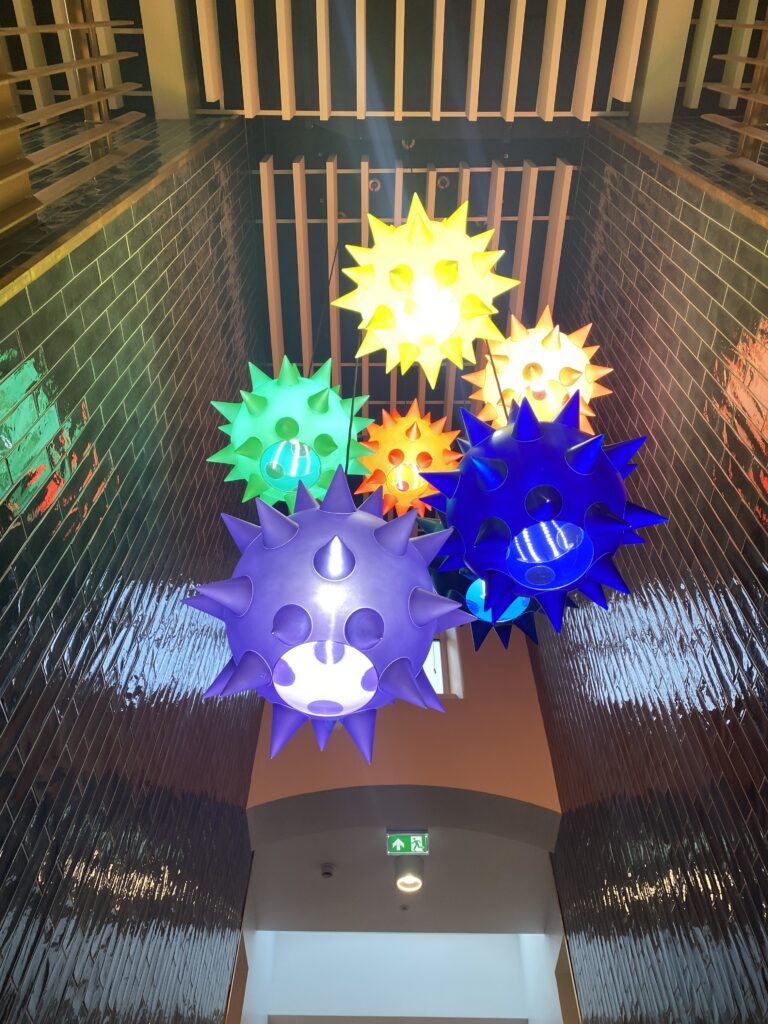
When you enter the Museum, into a space which was formerly a hospital, you still have the feeling of being in a hospital corridor with the ‘wards’ – now galleries – off to each side. But the spaces are bright, playful and engaging – I particularly love the wonderful light that hangs in the atrium which a fun and colourful representation of the Coronavirus Covid-19 virus!!
The narrative of the Museum starts with the history of healthcare which the Thackray shares through personal stories of those living in Victorian Leeds in the 19th-century. The galleries are reconstructions of the grimy streets where you can easily imagine the sights and sounds of life for the poor, living without public healthcare. The operating theatre with a very emotive film of an operation – an amputation – affected us all greatly.
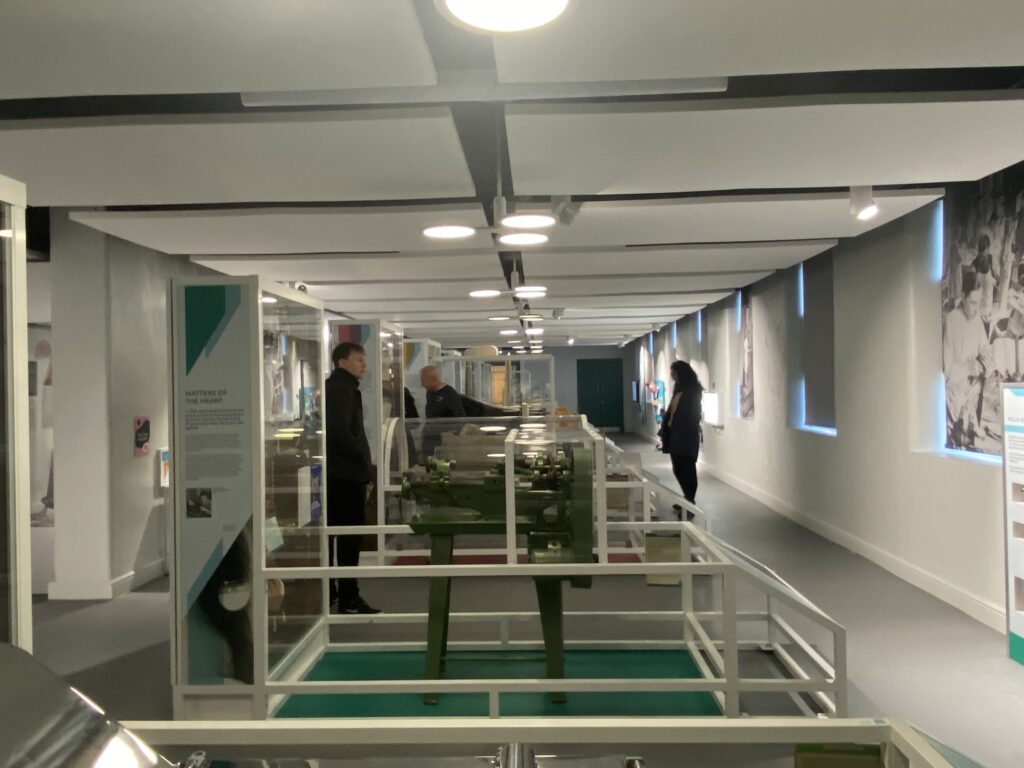
The Museum goes on to tell the story of public healthcare through to the present day and looks to the future as it encourages its audiences to consider medical innovations and discoveries.
I loved our visit and could have spent many hours more enjoying their spaces and stories and you can see more here https://thackraymuseum.co.uk/.
Yorkshire Sculpture Park
Written by Amelia Kedge, Assistant, International Training Programme
One of my highlights of our week in Leeds was visiting Yorkshire Sculpture Park (YSP). Located in the rolling hills of the West Yorkshire countryside, YSP is the largest sculpture park in Europe, spanning 500 acres.
An open-air museum, YSP is home to a collection of 90 outdoor sculptures by British artists with connections to Yorkshire such as Damien Hirst, Henry Moore, Barbara Hepworth and Anthony Gormley, as well as international artists hailing from Bangladesh, Brazil, India and South Korea, to name a few.
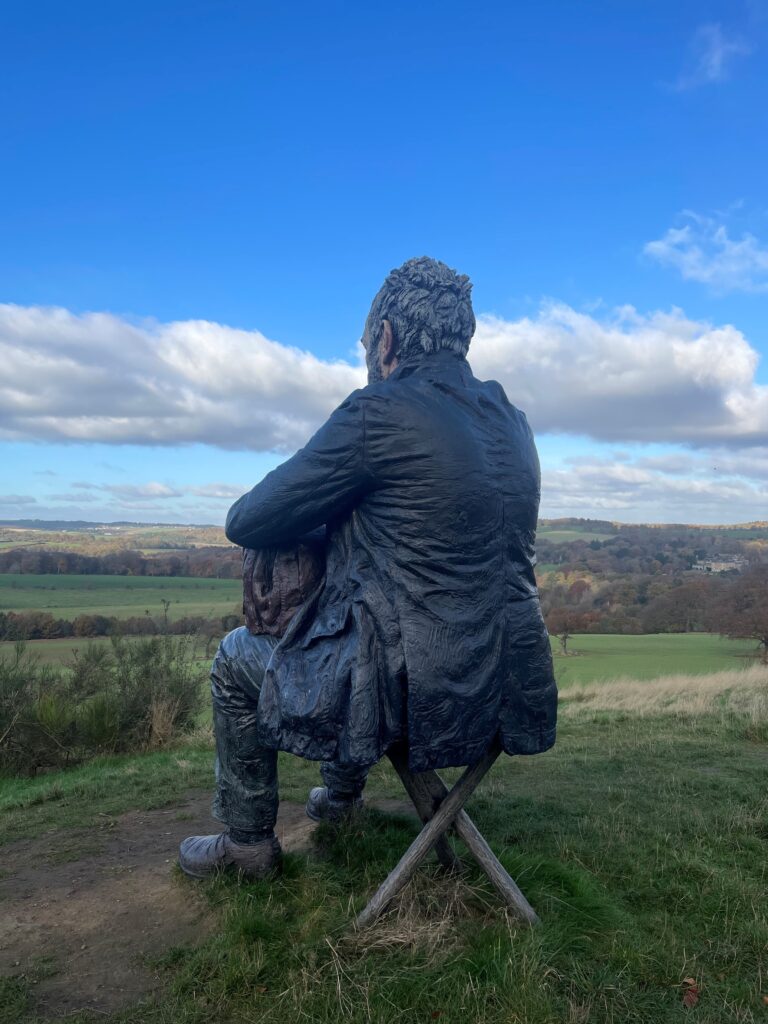
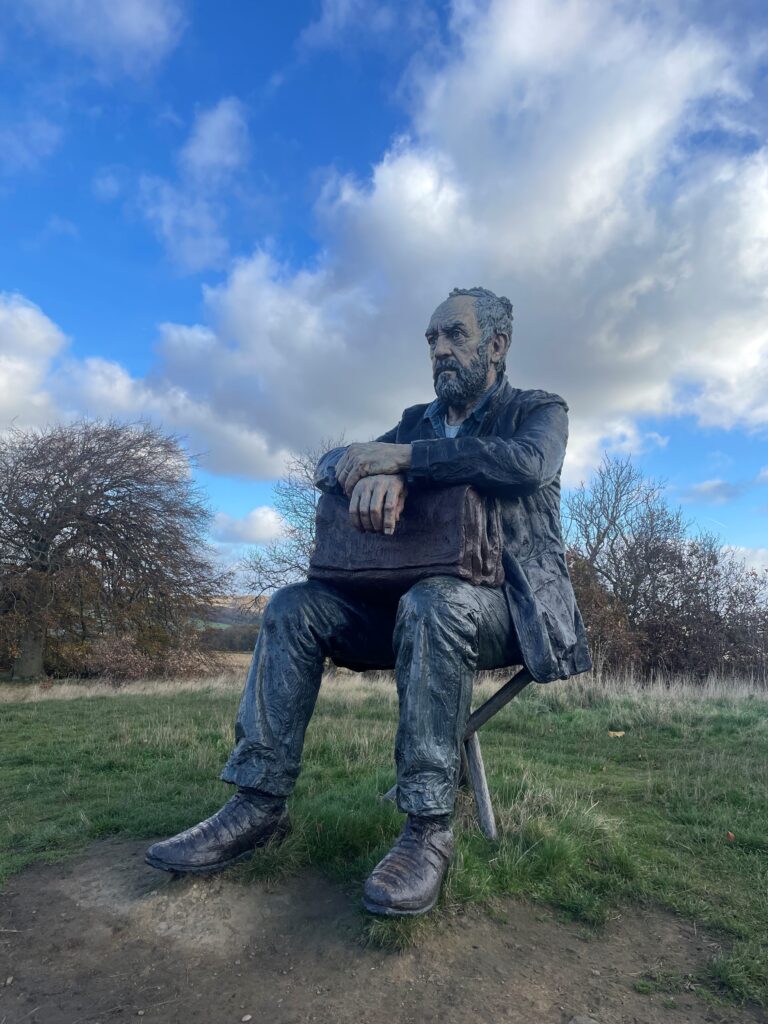
My favourite sculpture was Seated Figure by Sean Henry. Cast in bronze and vibrantly painted, Seated Figure depicts a man, 3 metres tall, sat deep in thought looking out across the landscape. Located at the highest point of the park, reaching this sculpture required quite a hike, but the views from the top were breathtaking. The artist plays with perspective in his work, and although the sculpture is huge up close, from a distance it is hard to tell if the figure is human or not.
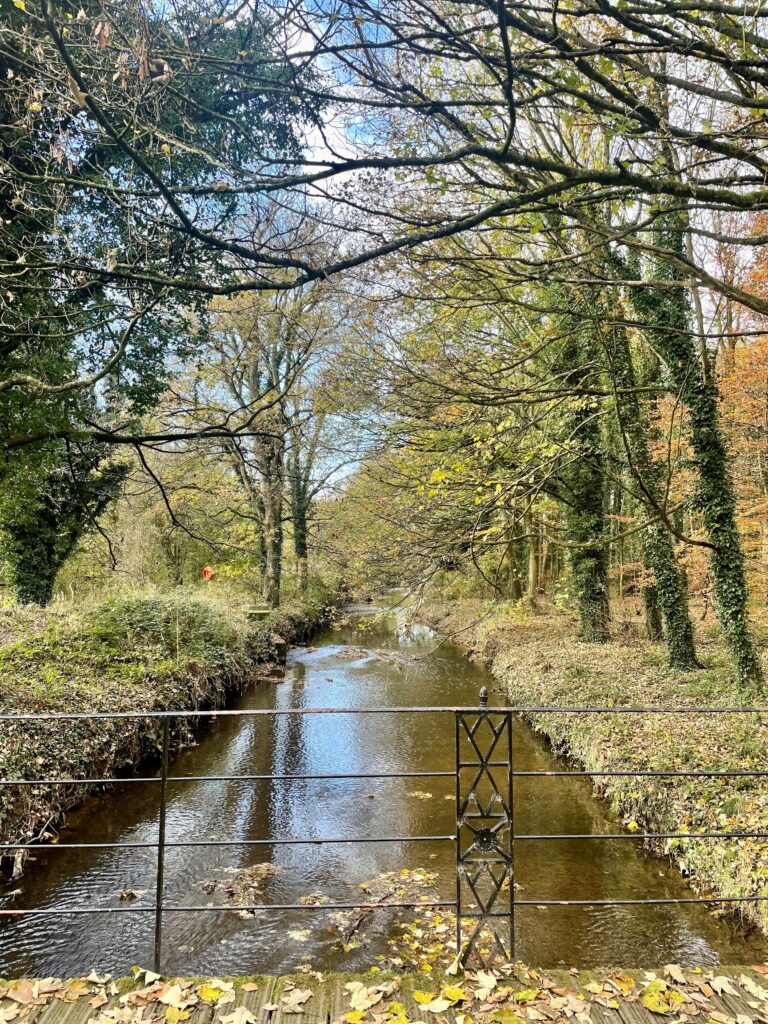
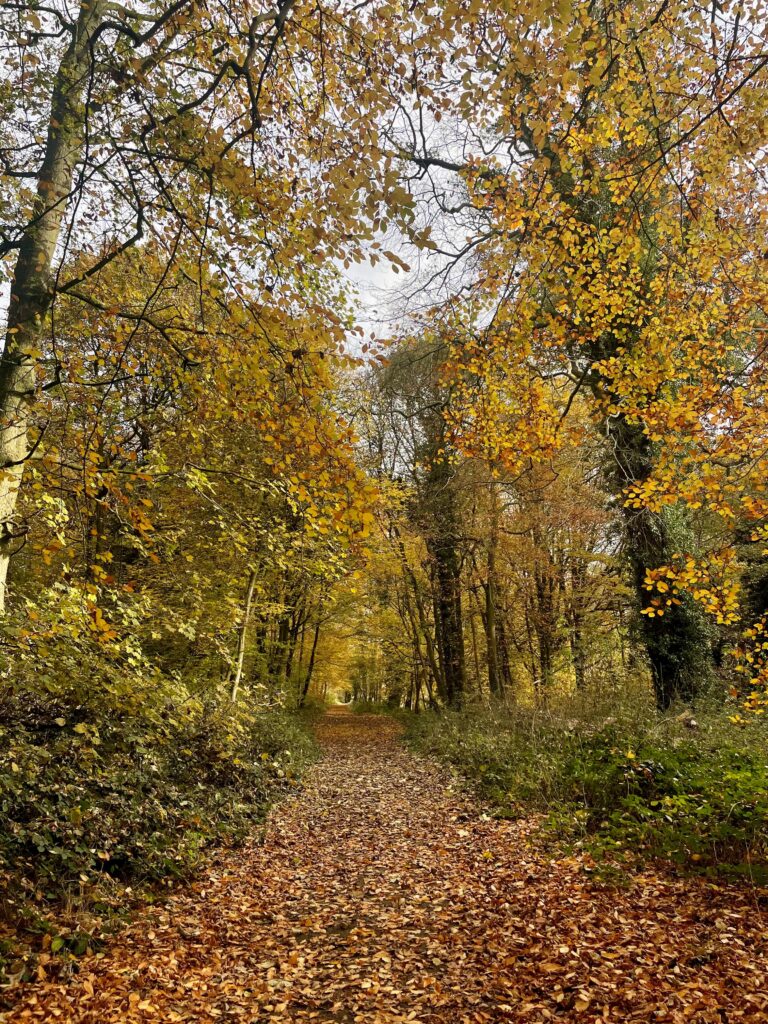
It was such a treat to spend some time in the peaceful countryside and reflect on the intense couple of days spent at the Museums Association conference. As YSP is located within a country park, there are many walking and horse-riding routes across the site, making it a perfect place to spend time in nature.
Peace Museum, Saltaire
Written by George Peckham, Coordinator, International Training Programme
On the last day of our week in Leeds we took a short train journey to the village of Saltaire. A preserved Victorian industrial village, Saltaire is listed as a UNESCO World Heritage Site. The textile mill which dominates the landscape of the village now contains shops, art galleries, restaurants, and the Peace Museum.
The Peace Museum is the only museum in the UK dedicated to the history and stories of peace, peacemakers and peace movement. The museum was founded in 1994, they have been collecting items which tell the stories of peace in many different forms. The museum’s 16,000 object collection is made up of banners, personal objects, campaign materials and artworks donated by people and organisations all over the world.
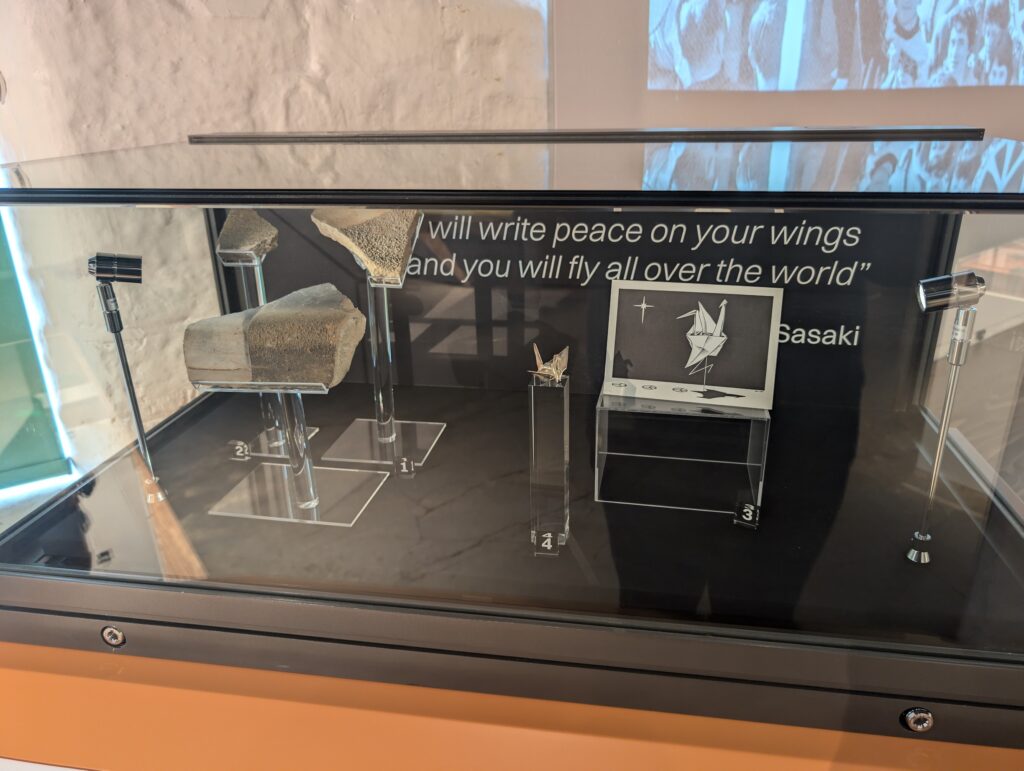
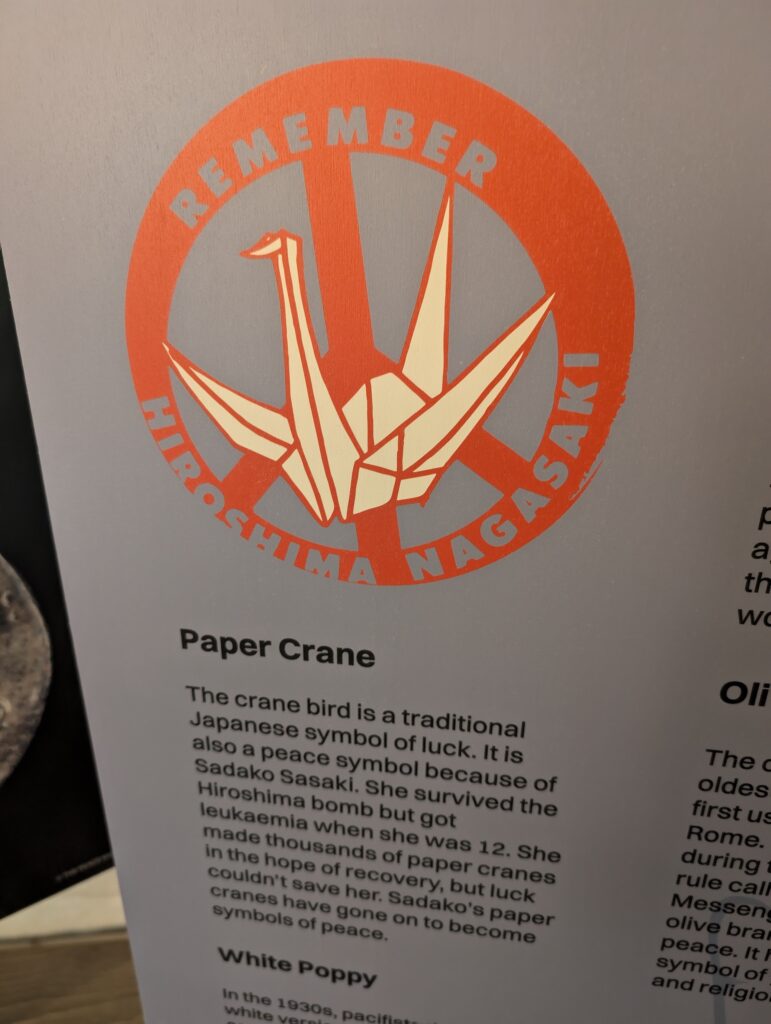
I was really surprised by the breadth of objects the museum had managed to collect. It wasn’t just a collection of objects relating to the peace from the UK, they had objects from around the world. They had a display covering the nuclear bombings of Hiroshima and Nagasaki in Japan, which included real roof tiles damaged in the bombings and a sculpture of a paper crane. Paper cranes have become a symbol of peace and nuclear disarmament in Japan. The museum included a table where you can make your own paper crane bird.
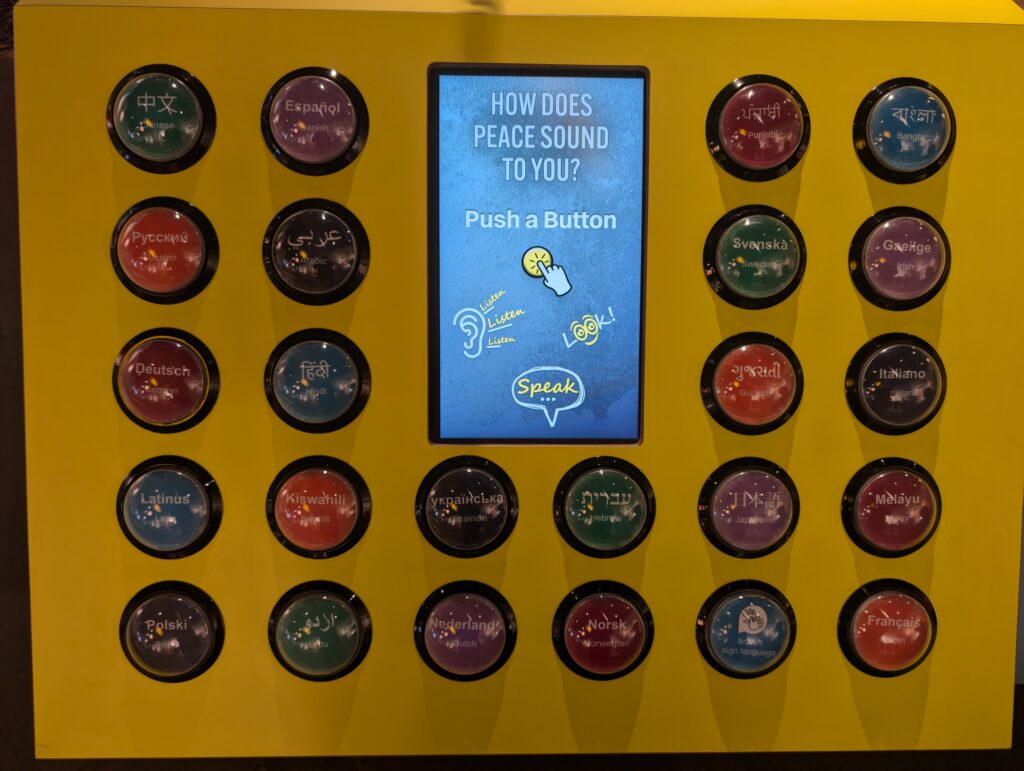
There were lots of interactive elements to the museum. There was a sound board where you could hear the word ‘peace’ spoken in different languages, which again emphasised the universal message of the museum. At the back was a temporary display called What does peace mean to you? In collaboration with artist Lakhbir Sangha, the interactive artwork asks visitors to share their responses to what peace means to them. Visitors can write their answers on a scroll of fabric which is placed in a resin sculpture.
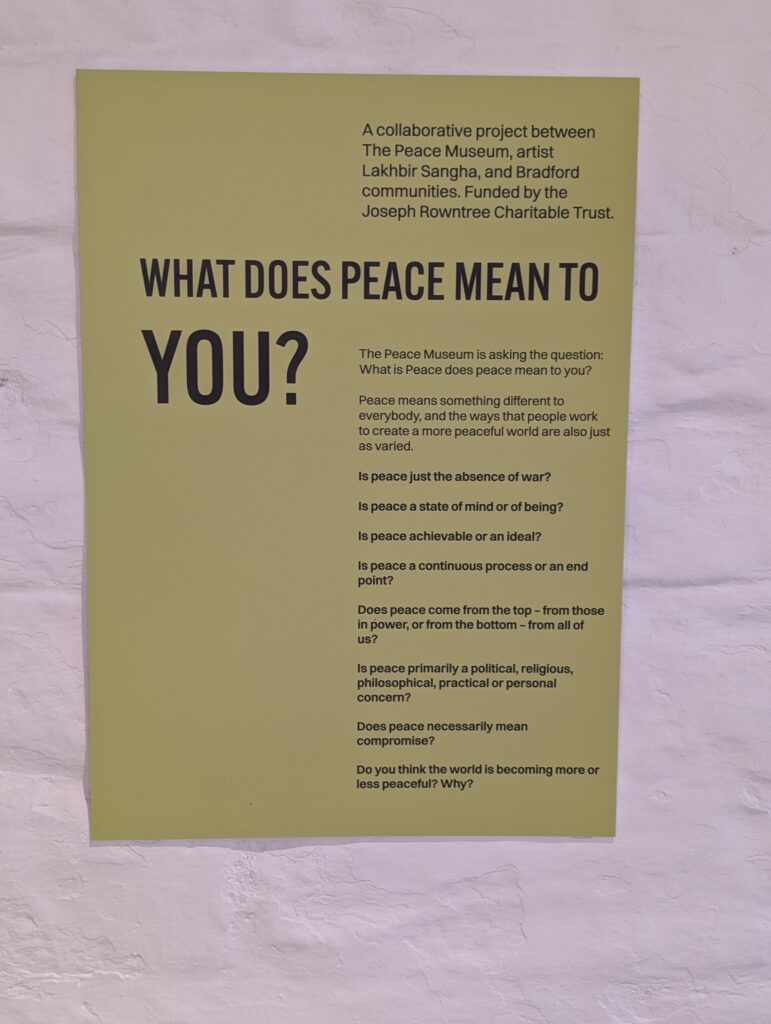
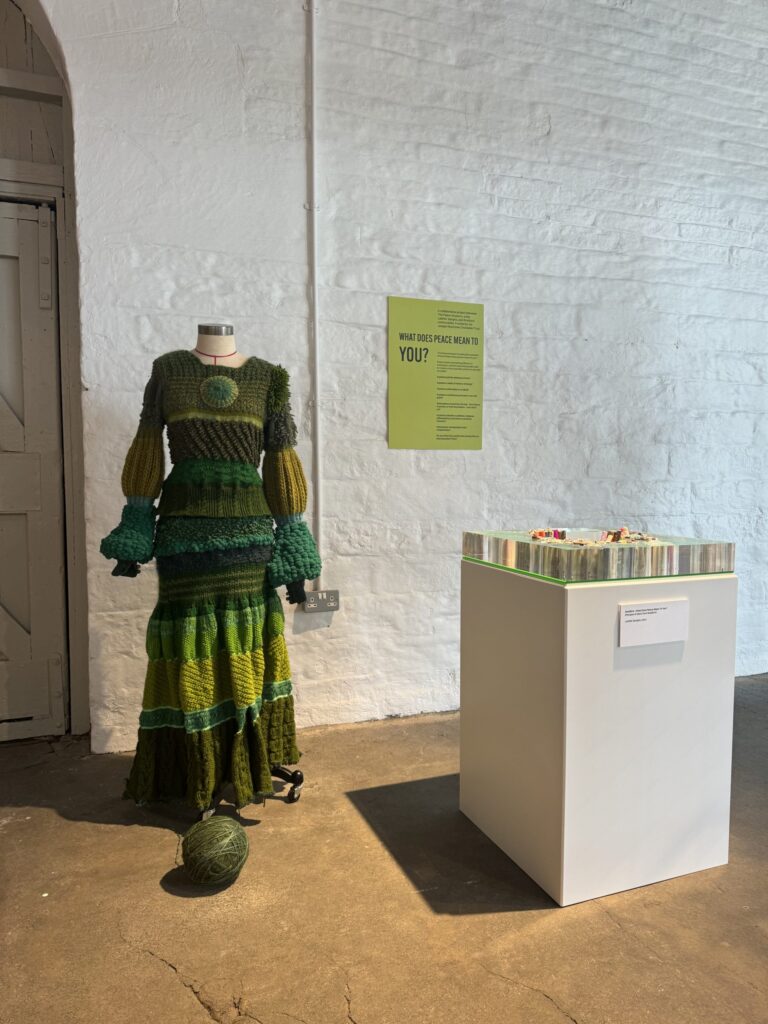
Overall, I really enjoyed the interactive elements displays, which encouraged visitors to participate in and reflect on the key message of the museum: to inspire visitors to consider peace as an active and ongoing process.
